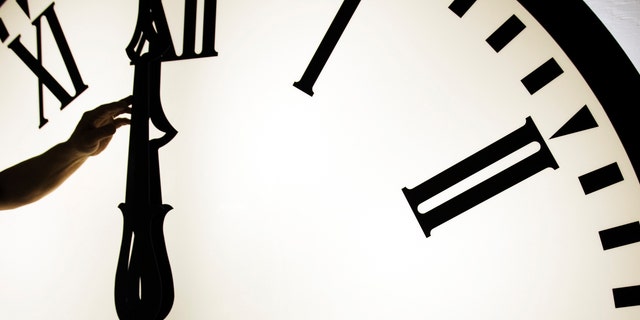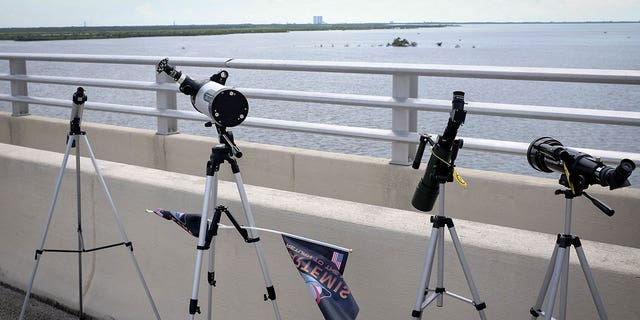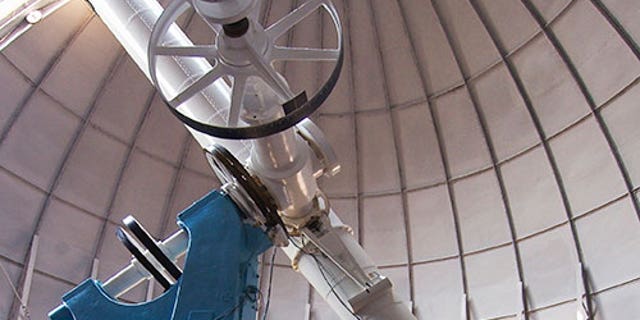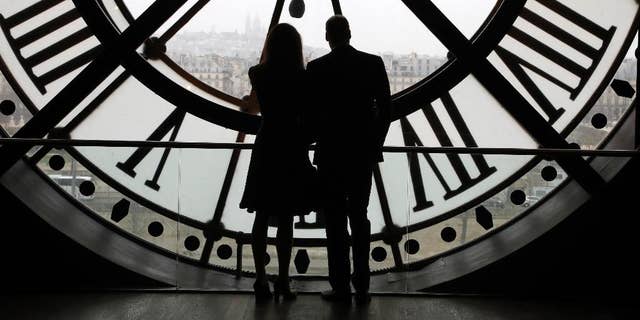
NEWYou can now listen to Fox News articles!
“Time flies like an arrow. Fruit flies like a banana.”
The House of Representatives is not quite ready to seize the hour.
It’s not exactly “springing forward” to sync with the Senate on a proposal to make Daylight Saving Time permanent.
The Senate approved the time change measure in March, but House Majority Leader Steny Hoyer, D-Md., is not watching the clock.
“Everybody seems to be very concerned about this and I understand that. There could be some urgency to it. But it’s not like something’s going to happen. We’re going to have Daylight Saving Time at least until November,” said Hoyer just after the Senate approved the measure in late winter. “So it’s not like if we don’t act today, we’ll either lose an hour or gain an hour tomorrow.”
RUBIO-BACKED BILL TO MAKE DAYLIGHT SAVING TIME PERMANENT PASSES SENATE, HEADS TO HOUSE
Article I, Section 8 of the U.S. Constitution grants Congress the power to “fix the standard of weights and measures.” That means Congress sets time policy. It has passed bills over the years to jump clocks ahead by an hour for “war time” during World War I. It has approved bills to establish time zones. Set Daylight Saving Time. Squeeze the length of the period the U.S. lingers on Standard Time. Congress has only overridden a presidential veto of legislation 112 times in the history of republic. But one of them was on a veto by President Woodrow Wilson to switch the clocks.

The U.S. Capitol Building is seen on October 22, 2021 in Washington, DC. (Anna Moneymaker/Getty Images)
Even though Congress is in charge of time, it doesn’t really control time.
“This is where time happens,” said Geoff Chester, public affairs officer at the U.S. Naval Observatory Master Clock in Washington, D.C. “Sort of.”
Albert Einstein’s special theory of relativity taught us all that time is relative. That means, it’s possible the House has already passed the Daylight Saving Time bill. But we just aren’t aware of that in our own time continuum.
“Of the things that we can observe and measure in the universe with very high precision, the one that we know the least about intrinsically is time,” said Chester. “There are people who will argue that time is something that only exists within the human mind. And there are others that will tell you that time pervades the entire universe.”
PERMANENT DAYLIGHT SAVING TIME MAY BE HARMFUL TO OUR HEALTH, EXPERTS SAY
In other words, time may not actually exist. It’s a construct designed by humans.
“Civilization was enabled by our ability to use time as a tool,” said Chester. “For planning purposes, we developed the ability to predict when things are going to happen in the sky. We developed the ability to utilize time to plan when you’re going to plant your crops and when you’re going to harvest your crops. This is what led us eventually to a kind of a higher state of appreciation for this thing called ‘time’ than any other creatures that inhabit the planet.”
The Earth’s orbit around the sun and axis spin create the building blocks of time as humans experience it: years, months, days, minutes and seconds. The Egyptians decided there were 24 hours in a day. Sumerians carved each hour into segments of 60.

Scott Gow adjusts a tower clock on test at the Electric Time Company (REUTERS/Brian Snyder )
But those are just measurements. Those econometric understandings of time don’t really reveal the passage of time.
That’s why Chester is fond of the following old saw:
“I can’t tell you what time is. But I can tell you what time it is,” said Chester.
Time is an important commodity. In fact, the Naval Observatory would sell “time” to the railroads in the 19th century to help them calibrate their tables.
DAYLIGHT SAVING TIME: LAWMAKERS DEBATE THE NEED FOR TIME CHANGE AS CLOCKS SPRING FORWARD SUNDAY
Just every one knows what time it is, officials in Cape Town, South Africa shoot off a gun from a military battery each day at high noon. It’s been a daily custom since 1806.
The city of Vancouver, British Columbia, fires a cannon promptly at 9 p.m. each night. The original purpose was for ships to set their chronometers when they sailed in the 19th and early 20th centuries.
Navigators docked on the Potomac River bound for the Chesapeake Bay used to receive a signal via telegraph from the U.S. Naval Observatory to set their clocks before heading out on a voyage.
And while little of that goes on now, millions of people rely on the master clock kept at the observatory — even if they don’t realize it.

Customers try out a new Apple iPhone 6S at an Apple store on Chicago’s Magnificent Mile, Friday, Sept. 25, 2015, in Chicago. (AP Photo/Kiichiro Sato)
Their iPhones and computers ping the master clock at the observatory to get the time. And you can even dial a special number to hear the time announced, 24/7. The late actor Fred Covington recorded announcements for the clock decades ago. When you dial in, you first hear the thick, deliberate ticking of a clock for a few seconds. Then Covington’s baritone makes the time declaration.
“U.S. Naval Observatory master clock. At the tone, Eastern Daylight Time, 14 hours, 20 minutes, 45 seconds,” declares Covington.
And on. And on. And on.
REPORTER’S NOTEBOOK: DAYLIGHT SAVING TIME BILL PASSES IN SENATE WITH RARE SPEED
The time hotline fields three million calls a year.
But even though the clock tracks the time and Covington makes his announcements, Albert Einstein’s special theory of relativity means time isn’t always the same every where. Chester notes that the observatory has loaded atomic clocks onto commercial airliners flying in different directions around the world — and discovered they kept different times.
Time depends on where you are. Older grandfather clocks ticking back and forth may keep a faster time in a colder climate versus a southern climate where they slow down due to humidity. This is why a telescope is essentially a time machine.

Telescopes sit at the Parrish Park bridge after the launch of the Artemis I unmanned lunar rocket was postponed, in Titusville, Florida, on September 3, 2022. (MARCO BELLO/AFP via Getty Images)
“Everything as it was. We see the moon as it was one and a half seconds ago. We see the sun as it was eight minutes ago. We see Pluto as it was five hours ago,” said Chester. “The time that a clock ticks for a person here is going to be perhaps quite different from what time it ticks somewhere else.”
Time dilates in interstellar space. It slows down near black holes. Yet time seemingly accelerates here on Earth — depending on the activity.
“Time, of course, passes too fast when you’re at the beach,” said Chester.
DAYLIGHT SAVING TIME ENDS: ARE THERE HEALTH RISKS?
This is why sailors in the 19th Century would navigate using a manual sextant. The device would measure the angular distance between visible objects — say the horizon and certain stars. So, if you know your position, you can determine the time. If you don’t, it’s hard to say what time it is.
This is one of the many problems posed by prospective interstellar travel. In outer space, you may not be navigating around visible objects. Thus, it may be hard to keep track of time in deep space. Hence, what Einstein posited and his special theory of relativity. Time is relative. And humans developed time to keep track of what we do on Earth – not what goes on out there.
Plus, the Earth doesn’t make each rotation in precisely 24 hours. June 29 was the “fastest day” in 60 years, 1.59 milliseconds shorter than 24 hours. July 26 was 1.5 milliseconds shorter than normal. In fact, scientists documented the 28 fastest days on record in 2020 alone.

U.S. Naval Observatory has a historic 26-inch refractor telescope (Seth Rossman/U.S. Navy/Getty Images)
This is why the Naval Observatory periodically adds a second.
“Overall, the Earth is about a millisecond slower than it was 100 years ago. And making one rotation, that error accumulates on a day-to-day basis. Every 500 days or so, thousand days, you have an error and you’ve got to do something about it,” said Chester.
That’s when they add a leap second.
“We have found through exhaustive experimentation that it’s a lot easier to stop atomic clocks for one second and let the Earth catch up than it is to go the other direction,” said Chester.
This is where time is interlaced with position. Accuracy is paramount. It’s important to know what time it is — because it helps conventional devices such as GPS track location.
“One nanosecond of time error translates to a position error of one foot. If you have a one millisecond error or a one microsecond error, that’s 1,000 times longer in duration than a nanosecond. Now you’re talking about a position error of a thousand feet. Five microseconds is a position of a mile. A millisecond is a thousand times longer than a microsecond. So if you have a microsecond timing error, now you have a position there of a thousand miles,” said Chester. “If you are flying in interstellar space, you don’t even have this as a reference anymore.”
This explains why it was so important forn early sailors to measure time — and location — while at sea.

A giant clock at the Musee d’Orsay museum (The Associated Press)
“We would measure the ticking rates of chronometers against the stars, which was our best available time scale in those days. And we could determine how fast or how slow those clocks ran over a long period of time, and we could then send it out to sea saying, ‘This clock will do this in this amount of time,’ and the navigator knows how to correct that clock. So it gives him a reading that he can then rely on to determine where his location is,” said Chester.
Congress is now back in session for its final meeting of the year. It’s doubtful the House will act on the bill to align with the Senate to extend Daylight Saving Time.
BAD TICKER: DOES DAYLIGHT SAVING TIME CAUSE ‘BIOLOGICAL CLOCK SHOCK’ TO YOUR HEART?
To calibrate time, the Naval Observatory relies on a singular definition of a second. And, it takes about ten seconds to explain what one second is.
Pro tip: one second is not “one Mississippi.”
CLICK HERE TO GET THE FOX NEWS APP
“A second is 9,192,631,779 hyper-fine oscillations of the valence electron in Cesium 133,” said Chester.
It’s hard to understand what that means. And yet we all know precisely what that means.
We are all running out of time.








